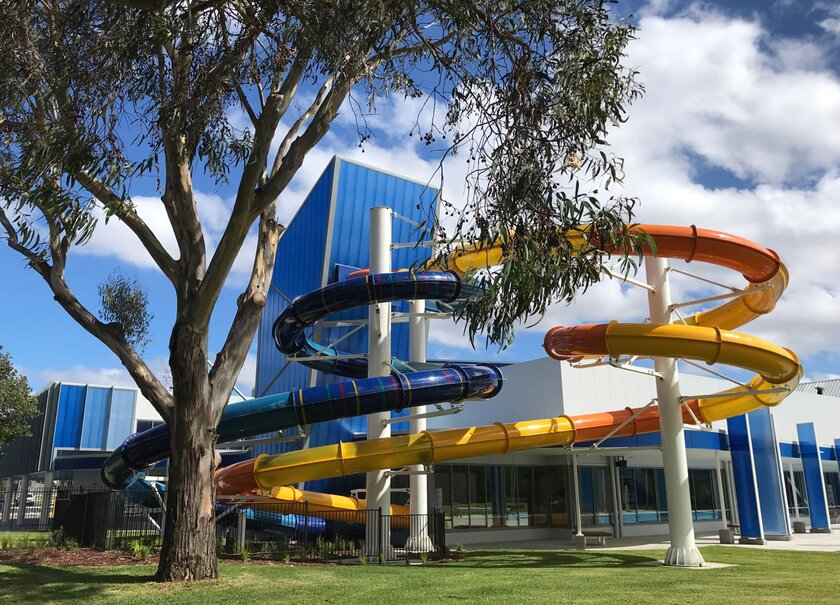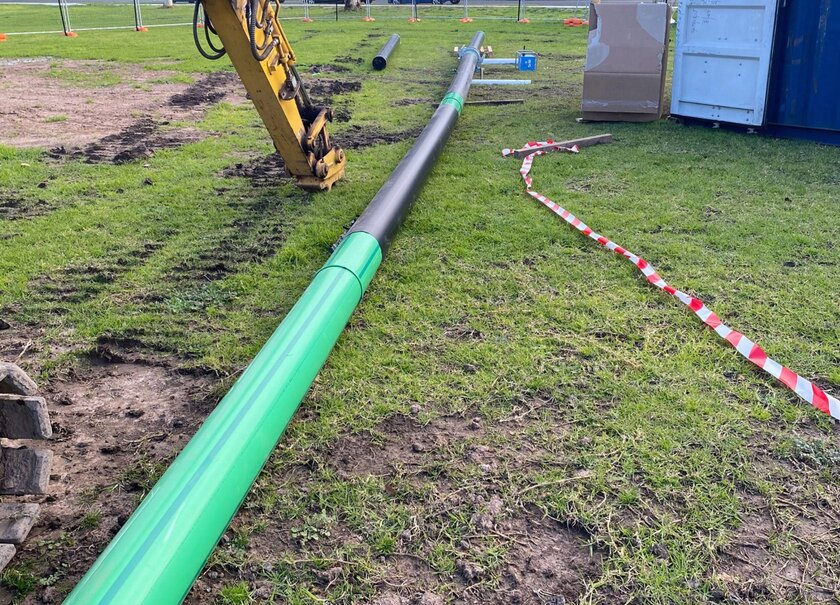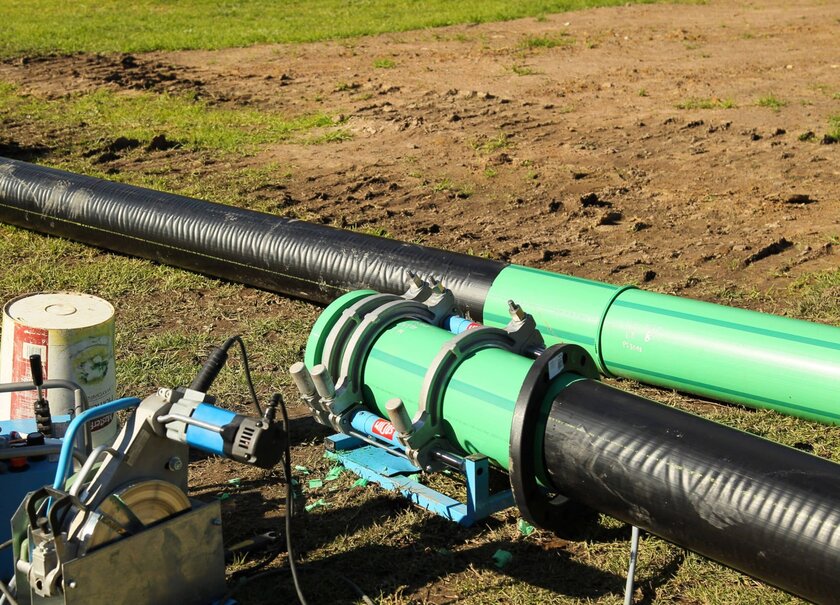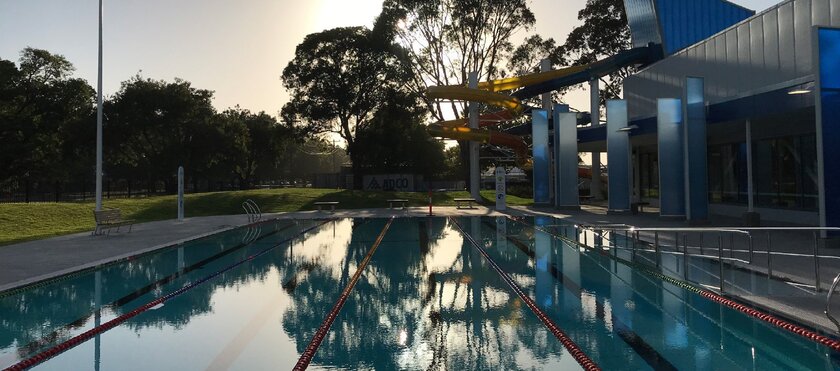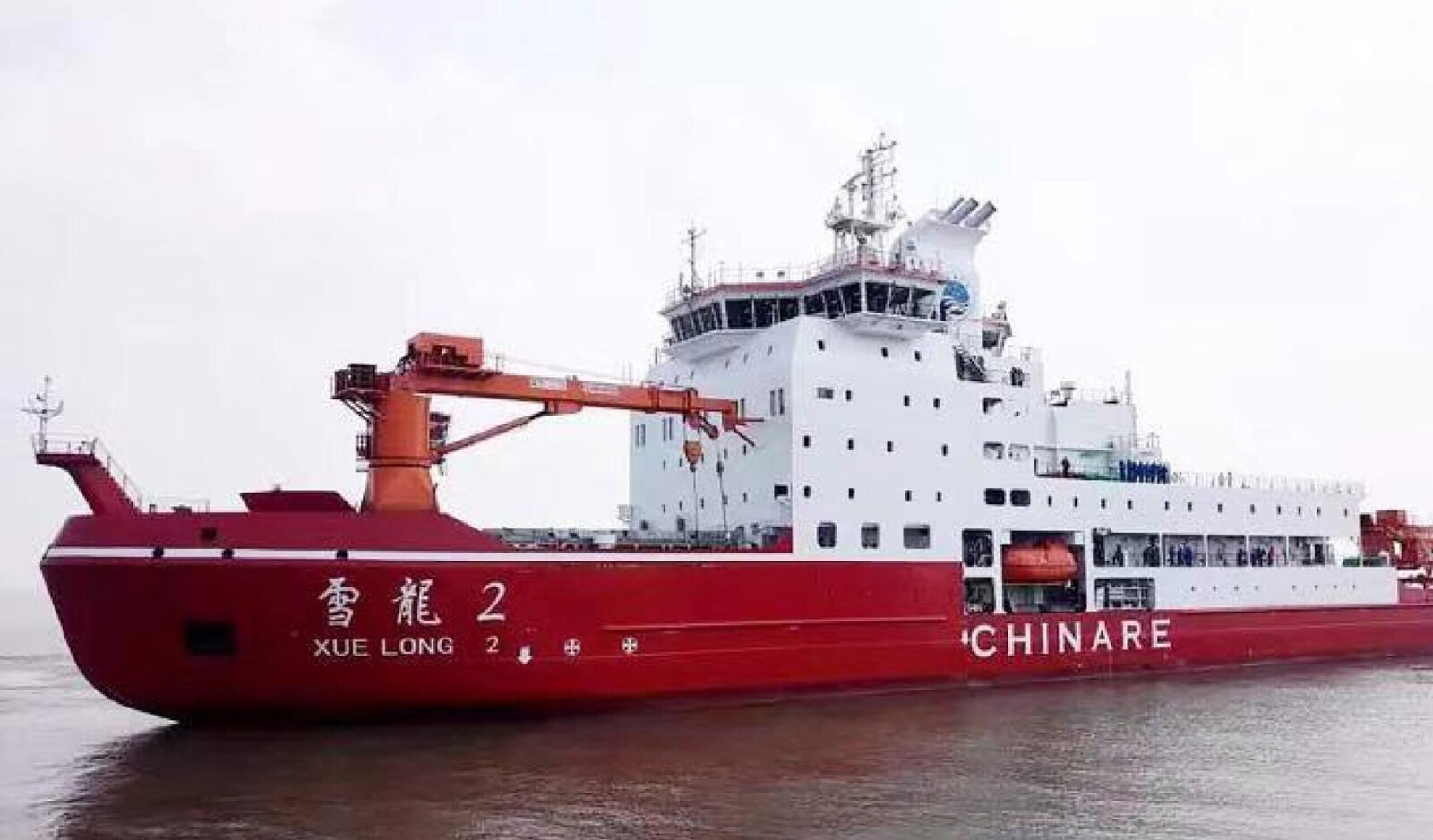Aquatic centre is heated with geothermal energy – aquatherm green was used – 57 million dollars was invested by the Latrobe Valley Authority in the Gippsland Recreation and Aquatic Centre (GRAC) in Traralgon, Victoria, Australia. The centre contains a range of facilities for competitive swimming, recreation, community use and large regional events, including a 50-metre indoor pool with eight lanes and 500 spectator seats. It also includes an indoor water play area, warm water therapy pool with whirlpool, 25-metre outdoor pool and wellness centre, among others.
As the first public recreational facility in Victoria, the swimming pools and all GRAC buildings are heated by a geothermal heating system. This uses the region’s groundwater, which has sufficient heat with geothermal gradients of up to 7.3 °C/100 m, making it ideal for geothermal use. Environmentally friendly and sustainable geothermal energy is a central component of the project and is expected to help reduce the ecological footprint and generate significant energy cost savings each year.
n order to reach the groundwater reservoir below Traralgon, a geothermal well was drilled to a depth of 636 metres and 642 metres. The water temperature at this depth is about 65 to 68 °C. The boreholes have an inner diameter of 200 mm. A submersible pump was installed in the borehole to pump the hot groundwater and feed it to the plate heat exchanger in the GRAC building services room. There, the heating water system with low-temperature circuit ensures that the energy from the groundwater is distributed to the various ventilation systems and the swimming pools. The water, which is cooled down to about 40 °C after this process, is returned through sand to a depth of 562 to 610 m via the seepage well 450 m away.
The water temperatures of 68 °C at the above-mentioned depth exceeded the expectations of those involved in the project: the geothermal groundwater thus provides 11.098 l/sec and around 2.8 MW of geothermal power per year as cost-effective and almost CO²-neutral energy for the swimming pools and the buildings of the entire GRAC facility.
One challenge of the project was to find a suitable piping system that would transport the geothermal heating water with flow and return via buried pipelines. Accordingly, it is important that the pipe material is suitable for geothermal heating, i.e. it must be able to withstand the transport of 68 °C warm water in connection with a water pressure of max. 10 bar with a calculated service life of 50 years. In addition, it should be corrosion and chemical resistant to the various minerals in the bore water over this period. In addition, the system must have good insulation properties and thus low thermal conductivity, and it should be flexible.
Corrosion-resistant, durable and flexible
Due to the special material properties, aquatherm green was chosen for this project. The pipe system from aquatherm consists of the corrosion-resistant and recyclable material polypropylene, which is characterised by its durability. The very good chemical resistance, the low pipe roughness and the high impact strength are important properties that speak for this pipe. Thanks to the low thermal conductivity of 0.15 W/mK compared to 384 W/mK for copper or 50 W/mK for steel, insulation of the buried aquatherm green was not necessary here.
aquatherm manufactures its own fibre-reinforced polypropylene composite. The three-layer pipes are extruded with a fibre-reinforced middle layer that stabilises the pipe and minimises expansion and contraction. The linear expansion coefficient is
α = 0.035 mm/mK. As the thermal expansion forces of aquatherm green are much lower than those of metal pipes, no anchor points or expansion facilities were required for the buried pipes. Furthermore, aquatherm green is lighter than metal materials. This can, for example, save the hiring of a crane to transport the pipes. Likewise, the easy processing of the pipes by socket or butt welding facilitates the installation and saves a lot of time.
Likewise, the easy processing of the pipes by socket or butt welding facilitates the installation and saves a lot of time. For the return line from the GRAC site boundary to the seepage well, a total of 545.2 m of the pipe system, also in the dimension 250 mm, was laid. All pipes and fittings are “Made in Germany” and were delivered from the aquatherm production facility in Germany directly to Australia in a 20 feet sea freight container. ree on-site training was provided for the installation, site support and required tools were provided by aquatherm technicians.

